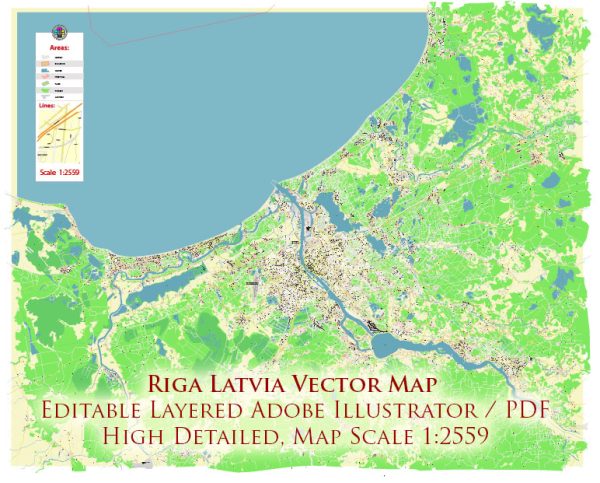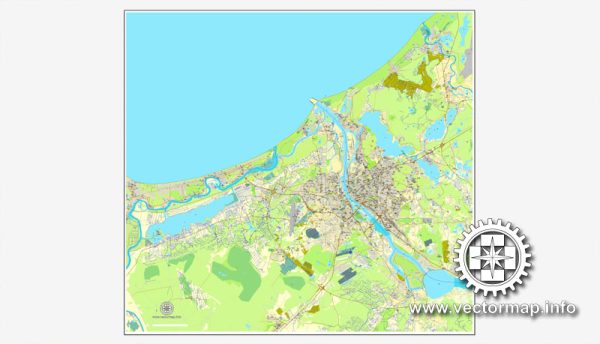General overview of maritime and air transportation in Riga, Latvia.
Maritime Transportation: Riga, the capital and largest city of Latvia, is situated on the Gulf of Riga along the Baltic Sea. The city has a well-developed port known as the Riga Freeport, which is one of the largest ports in the Baltic region. The port plays a crucial role in facilitating trade and cargo transportation, serving as a gateway for goods entering and leaving Latvia.
Key features of Riga Freeport include:
- Cargo Handling: The port handles various types of cargo, including containers, bulk cargo, general cargo, and Ro-Ro (Roll-on/Roll-off) cargo.
- Connections: Riga’s strategic location provides it with excellent connections to other Baltic Sea ports and beyond. It contributes to the city’s status as a significant transportation and logistics hub in the region.
- Infrastructure: The port is equipped with modern infrastructure and facilities to handle diverse maritime activities. It includes terminals, warehouses, and specialized facilities for different types of cargo.
- Trade and Transit: Riga Freeport plays a crucial role in facilitating international trade, serving as a transit point for goods moving between Europe, Russia, and other global destinations.
Air Transportation: Riga International Airport serves as the primary air gateway to Latvia. Here are some key aspects of air transportation in Riga:
- Riga International Airport: Located around 10 kilometers southwest of the city center, Riga International Airport is the busiest airport in the Baltic states. It serves as a major hub for both domestic and international flights.
- Airlines and Destinations: The airport is served by numerous airlines offering flights to various destinations in Europe and beyond. Major European carriers and low-cost airlines operate regular flights from Riga.
- Cargo Operations: In addition to passenger flights, Riga International Airport has facilities for cargo operations. It contributes to the transportation of goods and enhances Latvia’s connectivity in the global supply chain.
- Infrastructure: The airport has modern infrastructure, including multiple terminals, runways, and facilities to handle both passengers and cargo efficiently.
- Connectivity: Riga International Airport provides convenient connectivity for travelers, and its location makes it a strategic stopover for flights connecting Europe and Asia.
Please note that developments in transportation infrastructure can occur, and it’s advisable to check for the latest information from official sources for the most up-to-date details on maritime and air transportation in Riga, Latvia.



 Author: Kirill Shrayber, Ph.D.
Author: Kirill Shrayber, Ph.D.